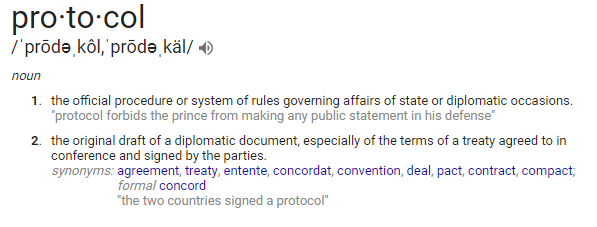High-Protocol is a Dead Internet Phenomena… or Is It?
Published:Modified: By CLAdmin Category: Lifestyle Topics Tags: advice commentary D/s lifestyle protocol

Preface
- This post is the sixth and last in a series of posts regarding protocol. Put together, they are really, really long. If you have the reading attention span of a gnat on methamphetamines, then the TL;DR version is this: Protocol exists in nearly every BDSM/Kink partnership, whether occasional play partners to full-fledged TPE relationships. It’s not a question of whether to protocol but whether to add degrees of protocol. There’s also a discussion on why protocol != High-Protocol. If you intend to read all of them in one sitting once published, get some water to hydrate and a snack or two – you’ll need both. Feel free to leave us some comments!
angi, g, and mynx.
High-Protocol is a Dead Internet Phenomena… or Is It?
This final in our multi-post series on protocol focuses on two things: Why High-Protocol is not as prevalent as it used to be, and whether it is largely an Internet phenomenon. This is the final post in the series.
Suspicions on Why High-Protocol has Fallen Away
- Mentoring of newcomers to the lifestyle has largely become a thing of the past. Whether you came to it offline or online, it was more commonplace 20 or so years ago for “houses” to have certain styles and practices that submissives had to adhere to or be trained in. Today’s mentor is more focused on helping others discover their own leanings and to navigate the vast yet loose community structure than they are on establishing high-protocol mannerisms.
- The “Old Guard” started to leave the “scene” both offline and online. Some got jaded and felt under-appreciated. Others who adhere(d) to high-protocol felt judged or mocked by others, so kept their lifestyle choices to themselves or took another look at it and became more relaxed. Conversely, some who “judged” or “mocked” did so in an attempt to shake off some of the rigidity that came along with high-protocol.
- Protocol, at any level, is not a one-fits-all thing. Dominants trying to adhere to an Old Guard style of doing things often begin to feel exhausted with implementing rigid standards and may not understand [yet that it’s not necessary to maintain obedience. The same applies to submissives in reverse.
- BDSM/Kink has become more mainstream and more relaxed. By the very nature of it permeating popular culture in the form of books, films,, and music, it has “come out”. As more people begin to realise that a lot of what they are already doing is BDSM or Kink-related come to explore or join the fray outright, the adherents to High-Protocol are dwindling They haven’t gone away, but they are rapidly becoming outnumbered.
- High Protocol is seen by many new to the lifestyle as pretentious, forced, elitist, and lacking substance – it can cause newcomers, both dominants and submissives, to deny a part of themselves simply to avoid being associated with what they see as the negative aspects.
- Because high-protocol is so rigid, it can cause newcomers who haven’t experienced anything else yet to try to bend to fit in as a part of the crowd. This can cause them to behave in a way that feels unnatural, simply to fit in. Once they learn there are different styles they will often discard the notion of high-protocol altogether in favour of less formal modes.
Is High-Protocol Largely an Internet Phenomena?
- High-Protocol, in the sense of rigid rules and a one-size-fits-all style of training submissives and mentoring new dominants, came from an established offline mode of doing things, so we would argue that it did not start as an Internet phenomena. However, with the changes the community has undergone, especially in the last two decades, it certainly appears to be an Internet phenomena now.
- It is nearly impossible, day-to-day, to use terms like “Sir” or “Master” in public or even amongst “vanilla” family and friends, so the demanding of their use is frequently only done online unless offline amongst others in the lifestyle.
- It is a way for the lazy [yes, we used the term lazy, to determine respect and deference online without having to learn other language cues to denote tone – both submissives and dominants are guilty of this.
- Respect is earned, and some feel that titles and deferment should only be given to one’s own dominant; possibly to some select others; and definitely not to literally everyone. This is largely understood in offline situations, but for some reason, the demand of titles from perfect strangers persists in online venues.
- Unlike offline BDSM/Kink events, where there is a propensity toward diversity and the acknowledgement that not everyone does everything the same, segregated areas often exist online. One can create a themed chat room or forum and toss anyone out who isn’t willing to adhere to high-protocol. Whereas offline, those demanding that everyone behave in a way they deem fit will frequently be told to chill out or go away if unwilling to do so.
Back to the Beginning of the Series: Protocol vs. No Protocol